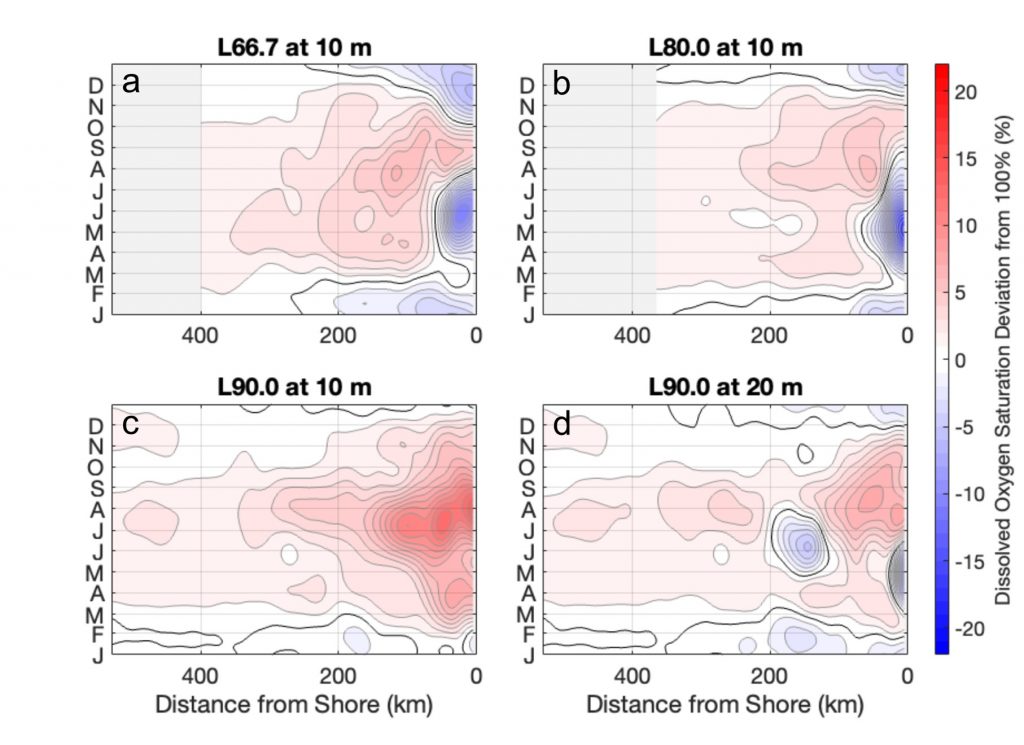Ren, A.S., Rudnick, D.L., & Nicholson, D.P. (2025). Seasonal dissolved oxygen gas exchange in the California Current Upwelling System. Progress In Oceanography, 103473. https://doi.org/10.1016/j.pocean.2025.103473

Image provide by Alice Ren.
Eastern boundary current systems are known for seasonal upwelling that brings water from below the mixed layer to the surface. The process deoxygenates the water column by bringing lower-dissolved oxygen water closer to the surface and oxygenates the water column by driving primary productivity due to the injection of nutrients from deep waters. Here, an observational dataset of 5 years of dissolved oxygen, temperature, and salinity measured to 500 m and from the coast to around 400 km offshore is used to study the seasonal evolution of air-sea exchange of oxygen in an upwelling region. A narrow band of coastal oxygen undersaturation drives dissolved oxygen uptake by the ocean in spring and summer, while in winter dissolved oxygen uptake predominates due to more widespread but less intense oxygen undersaturation. Oxygen outgassing occurs offshore of the nearshore uptake band in spring and summer, driven by warming and primary productivity, such that the cumulative net oxygen gas exchange integrated seaward from shore reaches zero once around one hundred kilometers from the coast. Ventilation of the upper ocean is observed as a result of shoaling isopycnals in the upwelling season. Competing factors causing uptake and outgassing and the seaward extent of the domain determine whether an upwelling zone is a net source or sink of oxygen gas.
